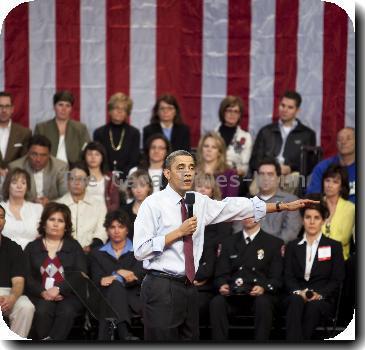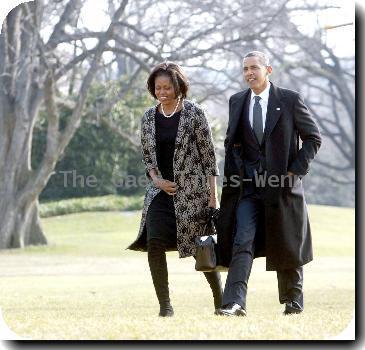On battlefield where the enemy wears no uniform, how far should US go in protecting civilians?
By Robert Burns, APThursday, May 13, 2010
US war aim: protect civilians first, then troops
WASHINGTON — A key to the U.S. approach to fighting the Taliban insurgency in Afghanistan is this seemingly backward logic: The more aggressively you protect your own troops, the less secure they may be.
The idea is that troops who put themselves at risk to protect innocents will ultimately help decrease violence against Americans. That’s because every time U.S. forces inadvertently kill or wound a noncombatant, it outrages the families and communities of the victims and erodes support for the battle against militants, strategists say.
So protecting civilians isn’t only moral, it’s considered good strategy.
The idea is enshrined in the 2006 U.S. Army and Marine Corps field manual on counterinsurgency, or COIN, which says: “Ultimate success in COIN is gained by protecting the populace, not the COIN force.”
That partly explains why the U.S.-led NATO command in Afghanistan is considering recognizing soldiers for “courageous restraint” if they avoid using force that could endanger innocent lives — a proposal drawing fire in some military quarters.
It also shows why President Barack Obama, at his news conference Wednesday with Afghan President Hamid Karzai, emphasized the importance — and the complications — of avoiding civilian deaths and injuries. Sometimes the strategy puts troops at greater immediate risk, he noted, but “that’s a burden that we’re willing to bear.”
The specific rules for when troops may use deadly force in Afghanistan are classified, but commanders over the past year have publicly announced stricter guidelines limiting the use of airstrikes and night raids.
Although the policy is meant to advance the U.S. and NATO cause by building Afghan support at the grass roots, many soldiers and their families worry that by emphasizing restraint, the Pentagon is showing too much concern for the safety of foreign civilians and tying the hands of its own fighting force.
Some lawmakers also have expressed alarm.
North Carolina Republican Rep. Walter Jones, who opposes U.S. involvement in the war, said he is unconvinced after being briefed last week on the specific rules about when U.S. troops can use deadly force.
“You see these kids with their legs blown off and you just hope they were given a chance,” he said. “They are too restricted. … If you’re going to send the U.S. military to fight, then let them fight.”
The complicating factor, however, is that the final outcome of this fight will depend less on arms than on ideas, in the view of Gen. Stanley McChrystal, the top U.S. and NATO commander in Afghanistan, and others who say that military force alone cannot defeat the Taliban or stabilize the country.
Iraq war veteran John Nagl, who helped write the 2006 counterinsurgency manual and is now president of the Center for a New American Security, acknowledges opinion is divided on the wisdom of making protection of civilians the first priority.
“This issue is at the heart of counterinsurgency and of the difficulty that soldiers have in conducting counterinsurgency,” he said in a telephone interview Wednesday. “It’s one of the fundamental dilemmas we dealt with in writing the counterinsurgency manual. The fact is that to achieve the mission, individual soldiers have to accept more risk.”
Obama on Wednesday spelled it out in stark terms.
“Oftentimes they’re holding fire, they’re hesitating,” he said of U.S. troops seeking to avoid civilian casualties. “They’re being cautious about how they operate, even though it would be safer for them to go ahead and just take these locations out.”
This carefulness, Obama said, is what the U.S. military stands for.
“And that puts us more at risk, and it makes it more difficult. But that’s a burden that we’re willing to bear.”
Troops doing the fighting, as well as their families, can see it differently, as Defense Secretary Robert Gates heard when he appeared before a couple of hundred soldiers’ spouses at Fort Riley, Kan., last Saturday.
One spouse told him that she was troubled that soldiers are being asked to think twice before shooting — “in my opinion, to second-guess a spur of the moment decision” in the face of danger.
“The first thing I’ll tell you,” Gates replied, “is that it is clear to every soldier in Afghanistan that he has every right to do whatever is necessary to protect himself. So if a soldier is under threat, he can do the appropriate thing,” while keeping in mind the consequences of killing or hurting bystanders.
“If we kill an innocent civilian, we recruit a family for the Taliban,” he said.
Gates said McChrystal, who devised stricter guidelines for avoiding civilian casualties when he assumed command last June, does not dispute that his approach means greater risks for U.S. soldiers in the short run.
But he argues that if the Afghan population is protected more reliably, there will be less sympathy and support for the Taliban. That, in turn, will weaken the insurgency.
“As you become more successful in winning over the local population … over time the soldiers are actually safer,” Gates said.
This has become conventional wisdom in today’s U.S. military, a product in part of its experience in the early years of the Iraq war, where aggressive tactics only angered Iraqis and generated support for insurgents.
In Afghanistan, the enemy doesn’t wear a uniform, leaving the U.S. trying to balance protecting its troops and winning the support of a local population that already complains of a menacing foreign presence.
During the February U.S.-led offensive in Marjah, for example, troops were told they could not fire on unarmed people, even if they emerged from Taliban hideouts after shooting erupted.
Some troops said that meant a militant could fire at them, set aside his weapon and walk away, possibly toward a weapons cache in another location.
“I understand the reason behind it, but it’s so hard to fight a war like this,” Lance Cpl. Travis Anderson, 20, of Altoona, Iowa, told The Associated Press at the time.
Army Col. Wayne Shanks, a U.S. military spokesman in Afghanistan, said Wednesday, “We absolutely support the right of our forces to defend themselves. Valuing restraint in a potentially dangerous situation is not the same thing as denying troops the right to employ lethal force when they determine that it is necessary.”
Following the Marjah fight, McChrystal said the operation could have been over in one night but took three weeks because troops were so careful to avoid civilian casualties.
Tags: Afghanistan, Asia, Barack Obama, Central Asia, Collateral Damage, Iraq, Middle East, North America, United States, Washington


